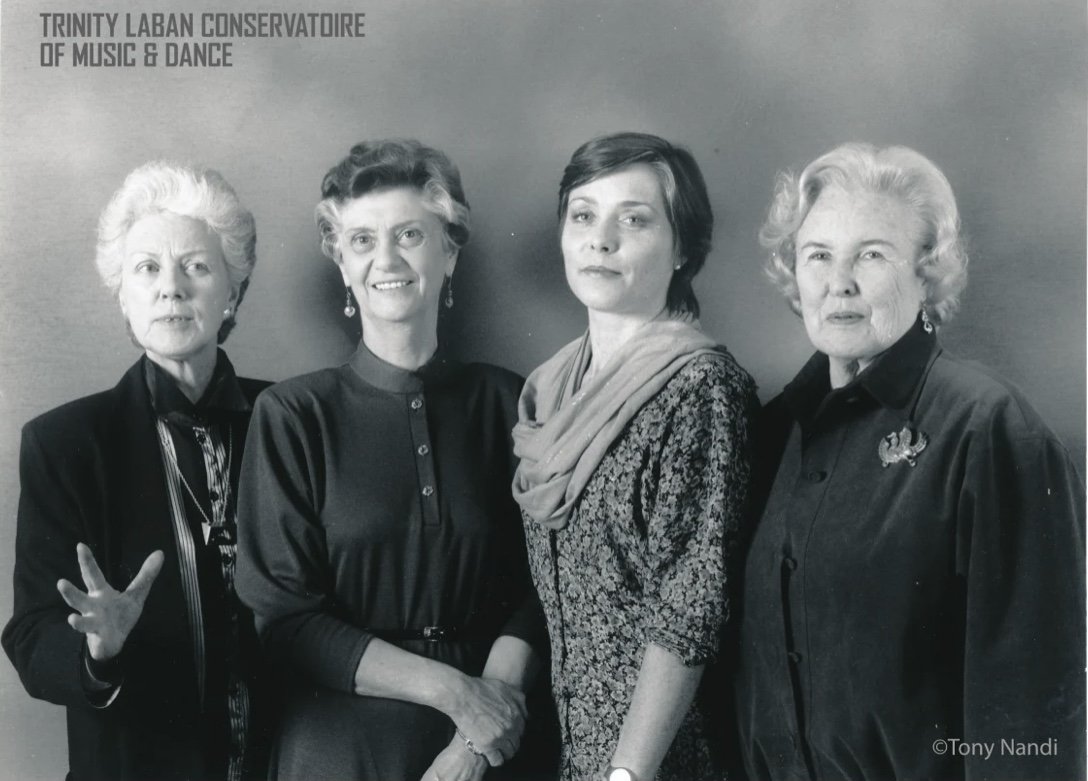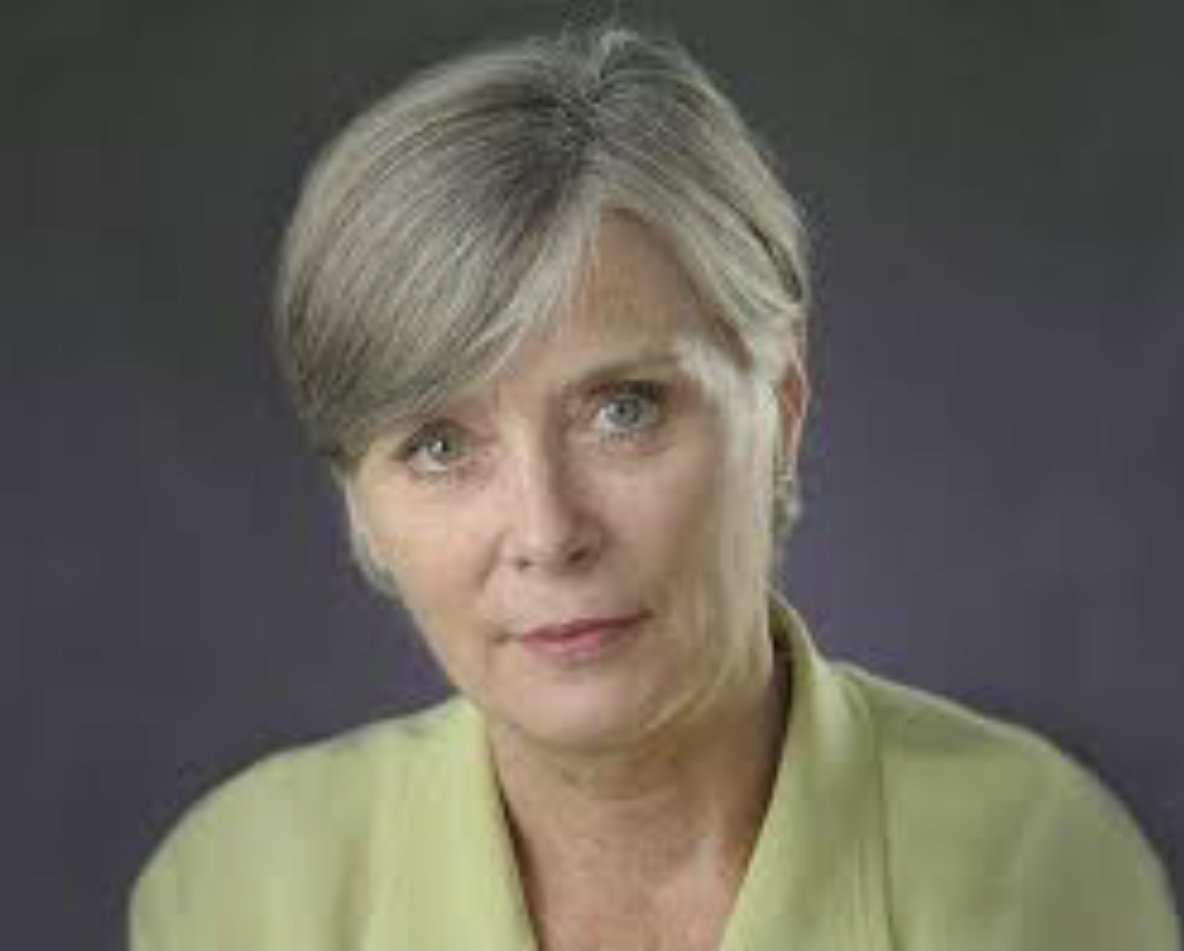Mirella Bartrip (1949-2021)
Over almost fifty years of service to British dance education, Mirella Bartrip sustained a widespread reputation as a leader of exemplary qualities: direct, decent, intelligent, inquiring, industrious, loyal. In particular, she was a leading figure at Trinity Laban, the London music-dance conservatoire, and its predecessor, the Laban Centre for Movement and Dance, where she was responsible for establishing and raising standards for generations of students, and where her integrity and zeal inspired both students and staff. Less than two years before her death on November 1 - the causes were cancer-related - she was given an OBE for services for Dance, Education and Training.
Born on April 30, 1949, she was one of three children. Her twin sister, Caro Southee, died as a young woman of cancer; her son, Frank Southee, is Bartrip’s prime surviving relative. Bartrip’s brother, using the stage name of Graham Bart, became a leading dancer with Scottish Ballet, partnering Margot Fonteyn; he died tragically early in his career, of a freak accident.
Bartrip herself trained at the Arts Educational School under the direction of Beryl Grey; she danced professionally in the late 1960s herself. (Her skill and wit in tap are remembered by colleagues, as well as her accomplishment and finesse in ballet.) In 1970, she gained a diploma in dance teaching at the London College of Dance and Drama, under the direction of Anita Heyworth. She remained at the London College as a member of staff for many years, at first part-time, teaching ballet; she also taught at Morley College (jazz to adults), the Weekend Arts College, and Lewisham College.
Both then and in the decades that followed, she was funny, frank, kind, supportive, practical, spontaneous. She was an elegantly and unfussily stylish dresser. Her face was open, her gaze direct, her smile relaxed, her laughter friendly. Above all, she was a model of integrity - and frighteningly hard-working. It became evident that she was committed to working with young people; many of her students came from disadvantaged backgrounds.
When she became a full-time member of the London College staff, she not only taught ballet but revealed her exceptional administrative skills: mistress of both diplomacy and the timetable, she worked to extend the College curriculum, and established many lifelong friendships In 1983, she joined the Laban Centre at New Cross, teaching ballet.
Those were early days for dance as a field of British academic study. The Laban Centre, then under the direction of Marion North, was the first British institution to offer a B.A. dance course: it was important to show that its principles and practices could withstand criticism from those for whom the performing arts and intellectual endeavour could not be reconciled. In 1984, Bartrip became the co-ordinator of the B.A. course. Soon, the course’s graduating students included the future choreographers Lea Anderson, Matthew Bourne (the most famous), Claire Glaskin, David Massingham, Michael Klien, and the future dance academics, teachers and examiners Jane Carr, Jonathan Thrift, and Sarah Houston. In 1985, Bartrip herself gained an M.A. in Dance Studies at Laban (the M.A. course there was also young; her teachers included the historian and critic Clement Crisp): her area of special study was Merce Cunningham.
Her commitment to students, to staff (I was among them in the 1980s), and to standards was total: she found time to care for a very large number of students and colleagues, maintaining friendships with many after they had moved on. Where differences arose between students and staff, between different members of staff, or between colleges, she was an ideal arbiter, fair, kind, and firm. She already knew many who worked at other dance institutions; in due course, she worked as an external examiner at several other colleges. Across the field, she became a leader in advancing levels of training in British contemporary dance.
In 1992, when the distinction between universities and other institutions of higher learning was dissolved, she led the Laban Centre’s transition from the Council of National Academic Awards to City University. She ensured that dance practice remained at the heart of all the Centre’s programmes, and that performance was an equal partner with choreography in the BA programme.
She long remained a central figure at Laban. She was its first Vice Principal (Academic) and then its Deputy Director & Dean of Studies, overseeing the creation and development of a series of flagship Masters programmes, including the UK’s first Masters programme in Dance Science. She was a crucial part of the Laban Centre’s move to its architecturally award-winning new building in Deptford in 2002, and then – its new director was Anthony Bowne - of its 2005 merger with Trinity College of Music to become Trinity Laban Conservatoire of Music and Dance: she had worked steadily to develop collaborative opportunities between dance and the other arts, music above all.
In 2010, she became the conservatoire’s Director of Dance. She was part of the team that saw Trinity Laban gain its own Taught Degree Awarding Powers and successfully enter the Research Excellence Framework for the first time. In the early 2010s, Trinity Laban became formally recognised as a world-class conservatoire, with partnerships with Juilliard in New York, K Arts in Seoul, and the Beijing Dance Academy: Bartrip was at the forefront of achieving this international status. She also applied her focus elsewhere: the board of governors and directors of English National Ballet School became grateful for her friendship and advice.
Her life-time partner was the visual artist David Cowley, with whom she made a civil partnership in June this year: they shared homes in Blackheath and in Languedoc, France. In 2018, she retired from Trinity Laban. But she never fully retired from the danceworld, even during the coronavirus lockdown answering procedural questions, giving advice, always maintaining friendships, taking pride and pleasure in the achievements of former students and colleagues. (My own last correspondence with her was about an American dance student seeking to research areas of non-cisgender identity, an area on which she wrote to me with wisdom and practicality.) At the end of 2019, it was announced she was being given an OBE in the 2020 New Year’s Honours. All too soon, she began the battle with cancer and chemotherapy at the start of the lockdown, showing her characteristic courage, sense, and good cheer. She is survived by David Cowley and her two stepchildren, Theo and Hannah.
She touched many thousands of lives. It seems reasonable to state that all who knew her will remember her with gratitude, with admiration, and with deep affection.
Many thanks to Sarah Stevens, Veronica Jobbins, and Susanne Lahusen. This obituary was commissioned by Trinity Laban after I had written of Mirella on social media on the day after her death.
1: Mirella Bartrip
2: Mirella Bartrip
2. This 1992 photograph by Tony Nandi shows four crucial woman at the then Laban Centre for Movement and Dance: left to right, Valerie Preston-Dunlop (b.1930), Marion North (1926-2012), Mirella Bartrip (1939-2021), and Bonnie Bird (1914-1995). It startles me to realise that I knew and worked with all four in the 1980s.
4: Mirella Bartrip
5: Mirella Bartrip with Alastair Macaulay at the eightieth birthday of Phrosso Pfister, former director of the London College of Dance and Drama.




